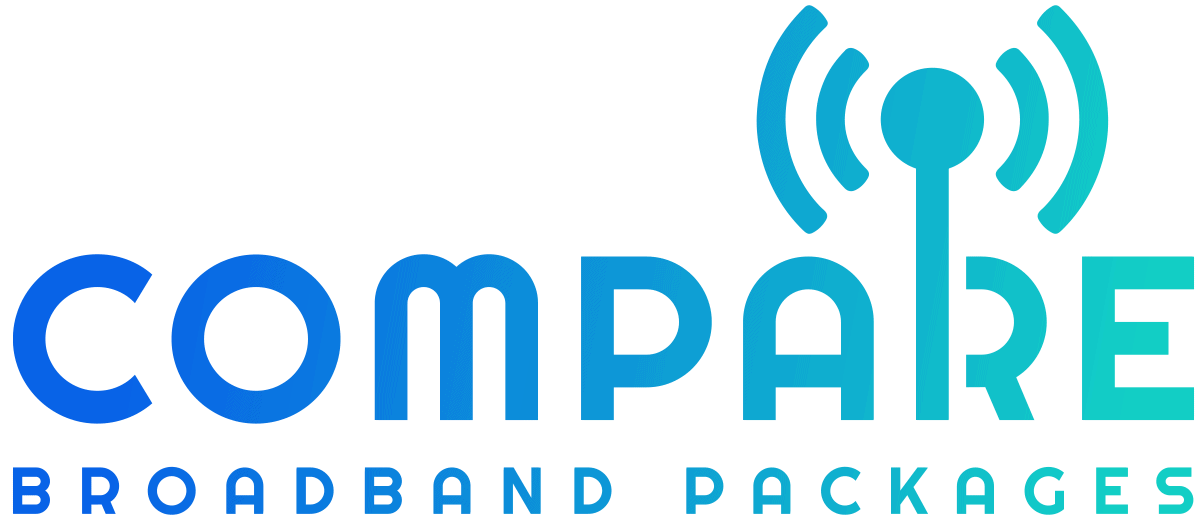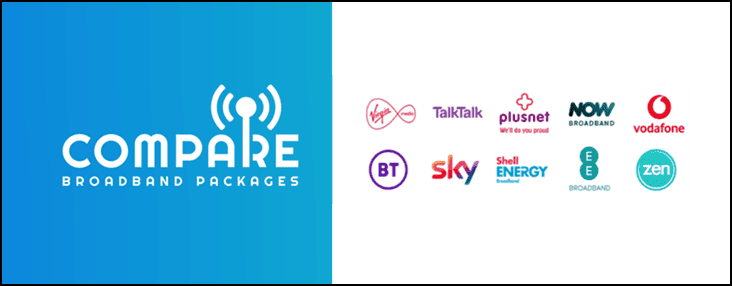
Streaming high-definition (HD) and ultra-high-definition (4K) content requires a reliable and fast internet connection. Both HD and 4K streaming require specific broadband speed requirements to ensure seamless playback without buffering or interruptions.
To fully enjoy HD and 4K streaming in the UK, it’s essential to understand the necessary broadband speed requirements. In this article, we’ll discuss the recommended internet speed for HD and 4K streaming and explore the various factors that can impact your streaming speeds.
Key Takeaways
- HD and 4K streaming require specific broadband speed requirements for seamless playback.
- Understanding the internet speed needed for streaming is crucial to enjoy high-quality content without interruptions.
- The recommended broadband speed for for streaming video in HD and 4K streaming depends on several factors, such as network congestion and device capabilities.
Streaming Quality Broadband Speed Requirements
| Streaming Quality | Required Speed | Speed Visualization |
|---|---|---|
| SD (480p) | 3-4 Mbps | |
| HD (720p) | 5-8 Mbps | |
| Full HD (1080p) | 10-15 Mbps | |
| 4K/Ultra HD (2160p) | 25-35 Mbps | |
| 4K/Ultra HD HDR | 35-50 Mbps |
Note: These are recommended minimum speeds. Actual requirements may vary by streaming service provider and content. Additional bandwidth is recommended for households with multiple simultaneous streams.
Understanding HD Streaming Speeds
If you love streaming movies or TV shows in high definition, you need to ensure you have the appropriate broadband speed. This will help you have an uninterrupted streaming experience, with movies and TV shows loading quickly and playing smoothly.
HD streaming refers to video quality that is higher than standard definition (SD) but lower than 4K. To enjoy HD streaming, you need to have a broadband speed of at least 5Mbps. However, to avoid any buffering, we recommend a speed of at least 10Mbps for HD streaming.
HD Streaming Broadband Requirements
General HD Quality Requirements
| HD Quality Level | Required Speed | Speed Visualization |
|---|---|---|
| HD (720p) | 5-8 Mbps | |
| Full HD (1080p) | 10-15 Mbps |
Major Streaming Service Requirements for HD
| Streaming Service | HD Requirement | Additional Notes |
|---|---|---|
| 📺 Netflix | 5 Mbps | Recommended for HD (1080p) quality |
| 🎥 Amazon Prime Video | 5 Mbps | Minimum for HD streaming |
| 🎬 Disney+ | 5-8 Mbps | Recommended for high-quality HD |
| 📽️ Hulu | 8 Mbps | Recommended for 1080p streaming |
| 📹 YouTube | 5 Mbps | Recommended for 1080p playback |
Note: These are recommended minimum speeds. For optimal streaming experience, especially with multiple devices or users, higher speeds are recommended. Network conditions, device capabilities, and service-specific factors may affect actual streaming quality.
If you’re not sure what your internet speed is, you can test it using an online speed checker. Once you know your speed, you can compare it to the recommended speed for HD streaming. If your speed is not sufficient, you may want to consider upgrading your internet package or optimizing your network for better streaming performance.
Optimal Broadband Speed for 4K Streaming
If you’re planning to watch 4K Ultra HD content, you’ll need to make sure your broadband speed is up to the task. 4K streaming requires considerably more bandwidth than standard definition or high definition streaming, so you’ll need a faster internet connection to enjoy it without buffering or interruptions. In this section, we’ll explore the broadband speed requirements for 4K streaming and how to ensure your connection is up to scratch.
As you can see from the table above, for 4K streaming, you’ll need a minimum download speed of 25 Mbps. This speed will ensure that you can watch content in stunning detail and clarity, without any lag or buffering. However, it’s important to note that this is just the minimum requirement, and you may need faster speeds if you have multiple devices streaming at once or if your broadband connection is shared with others.
4K (Ultra HD) Streaming Requirements
| 4K Format | Resolution | Required Speed | Speed Visualization |
|---|---|---|---|
| Standard 4K | 4K (3840 × 2160) | 25-30 Mbps | |
| 4K HDR | 4K HDR (3840 × 2160) | 35-40 Mbps | |
| 4K HDR Dolby Vision | 4K HDR DV (3840 × 2160) | 40-50 Mbps |
Major Streaming Services – 4K Requirements
| Streaming Service | Minimum Speed Required | Speed Visualization |
|---|---|---|
| Netflix 4K | 25 Mbps | |
| Amazon Prime Video 4K | 15-20 Mbps | |
| Disney+ 4K | 25-30 Mbps | |
| YouTube 4K | 20-25 Mbps |
Note: These speeds are recommended minimums for single-stream viewing. For optimal 4K streaming experience, consider:
• A stable internet connection with consistent speeds
• Additional bandwidth for multiple household devices
• Higher speeds for live 4K content (sports, events)
• Buffer headroom for peak usage times
One thing to bear in mind is that not all streaming services offer 4K content, so it’s worth checking whether the service you’re planning to use has a 4K option before you upgrade your broadband package. Netflix, Amazon Prime, and NOW TV are among the most popular streaming services that offer 4K content in the UK, so if you’re a fan of these services, you’ll definitely need to make sure you have the right broadband speed.
Factors Influencing Streaming Speeds
When it comes to streaming content online, several factors can influence your streaming speeds. While having a suitable broadband speed for streaming is crucial, other variables can affect your streaming experience, causing buffer or lag issues.
Factors Influencing Streaming Speeds
• Connection type (fibre, cable, DSL)
• ISP network congestion
• Peak usage times
• Background downloads
• Other streaming users
• Online gaming
• Regional infrastructure
• Local network congestion
• Available ISP options
The quality of your streaming experience is influenced by multiple interconnected factors, with some having more significant impact than others.
Here’s what you need to know:
Primary Factors (80-95% Impact):
- Your internet connection is the foundation of streaming performance, accounting for up to 95% of the streaming experience. A stable, high-speed connection is crucial for consistent streaming quality.
- Network setup (85% impact) and traffic management (80% impact) are critical factors that users can often optimize without changing their internet service.
Secondary Factors (70-79% Impact)
- Device capabilities (75%) and content provider infrastructure (70%) play important roles but are generally less controllable by end users.
Supporting Factors (Below 70%):
- Geographic location (65%) can affect streaming performance but is usually less significant with modern content delivery networks.
Streaming Optimization Tips:
- Start by addressing high-impact factors first
- Consider upgrading your internet package if consistently experiencing issues
- Use ethernet connections when possible
- Position your router optimally and minimize interference
- Manage household network traffic during peak streaming times
Remember: While individual factors have different impact levels, they work together as an ecosystem. Addressing multiple factors, even lower-impact ones, can lead to cumulative improvements in streaming performance.
How to Test Your Internet Speed
Now that you understand the broadband speed requirements for streaming HD and 4K content, it’s crucial to ensure that your internet speed meets those requirements. Testing your internet speed is a simple process that can help you identify any potential issues with your connection.
To test your broadband speed for streaming, follow these easy steps:
- Connect your device (e.g. laptop, tablet, smartphone) to your home Wi-Fi network.
- Open your preferred web browser and go to a reliable online speed test tool, such as Speedtest.net or Fast.com.
- Click on the “Go” or “Start” button to begin the test. The tool will measure your download and upload speeds, and your ping (latency) time.
- Once the test is complete, review your results to see if your internet speed meets the recommended requirements for streaming HD or 4K content.
- Or you can test your speed below
The recommended internet speed for HD streaming is at least 5 Mbps (megabits per second), while the optimal speed for 4K streaming is 25 Mbps or higher. If your test results fall short of these speeds, you may experience buffering or poor picture quality when streaming high-definition content.
It’s worth noting that your internet speed can vary depending on various factors, including the type of connection you have, the time of day, and the number of devices connected to your network. Therefore, it’s a good idea to test your speed regularly to ensure you’re getting the most out of your broadband service.
Tips for Improving Streaming Speeds
If you’re experiencing buffering or slow load times when streaming, there are several measures you can take to improve your streaming speeds. By optimizing your home network and reducing bandwidth usage, you can enjoy seamless playback of your favorite shows and movies.
1. Optimize your home network
Ensure your router is positioned in a central location and is updated with the latest firmware to improve signal strength. Use a wired Ethernet connection instead of Wi-Fi if possible, as this will reduce interference and provide a faster, more stable connection.
If you must use Wi-Fi, consider upgrading to a mesh network system or a Wi-Fi extender to improve coverage throughout your home.
2. Reduce bandwidth usage
Close any unnecessary programs or browser tabs that may be using bandwidth, as these can affect your streaming speeds. If multiple people are streaming at the same time, consider reducing the video quality or limiting the number of streams to avoid network congestion.
You can also adjust the video quality settings on your streaming service to reduce bandwidth usage.
3. Select the right streaming service settings
Check your streaming service settings to ensure they are optimized for your internet speed. Some services may automatically adjust video quality based on your internet speed, while others may require you to manually adjust the settings.
By selecting the appropriate settings, you can ensure the best possible streaming experience on your current internet connection.
Future Streaming Technologies and Bandwidth Requirements
As streaming technology continues to advance, the demand for higher internet speeds increases. While HD and 4K streaming are the current standards for high-quality video content, new technologies like virtual reality (VR) and augmented reality (AR) streaming are on the horizon.
VR and AR streaming require even higher internet speeds than 4K streaming due to the large amount of data being transmitted in real-time. VR streaming, for instance, requires a consistent internet speed of at least 50 Mbps to ensure smooth playback.
As these new technologies become more prevalent, it’s important to keep up with the recommended bandwidth requirements to fully enjoy the immersive experience they offer. Additionally, advancements in compression and encoding technology may reduce the amount of bandwidth required in the future.
Conclusion
By now, you should have a good understanding of the broadband speed requirements for HD and 4K streaming. Having the appropriate internet speed is crucial for enjoying high-quality content without interruptions.
To ensure your internet speed meets the streaming speed requirements, we recommend testing your internet speed using reliable online tools. If your speed is not up to par, consider optimizing your home network by reducing bandwidth usage and selecting the right streaming service settings for smoother playback.
It’s also important to stay informed about evolving streaming technologies and the potential bandwidth requirements they may introduce. As virtual reality (VR) and augmented reality (AR) streaming become increasingly prevalent, it’s essential to have a fast and reliable internet connection to fully enjoy these immersive experiences.
Understanding and meeting the broadband speed requirements for HD and 4K streaming is key to a seamless streaming experience. Follow the tips we’ve provided, and you’ll be streaming high-quality content without interruption in no time.
FAQ’S
What is the recommended broadband speed for HD streaming?
The recommended broadband speed for HD streaming is at least 5 Mbps (megabits per second). This speed will ensure a smooth streaming experience without buffering or interruptions.
What is the recommended broadband speed for 4K streaming?
The recommended broadband speed for 4K streaming is at least 25 Mbps (megabits per second). This speed is necessary to handle the high data requirements of ultra-high-definition content.
Can I stream HD or 4K content with a slower internet speed?
While it is possible to stream HD or 4K content with slower internet speeds, you may experience buffering, lower video quality, or interruptions. To enjoy the best streaming experience, it is recommended to meet the minimum broadband speed requirements.
What factors can affect my streaming speeds?
Several factors can influence your streaming speeds, including network congestion, the capabilities of your streaming device, the quality of your Wi-Fi signal, and the overall bandwidth usage in your home. Optimizing these factors can help improve your streaming experience.
How can I test my internet speed?
To test your internet speed, you can use various online tools. Most internet service providers (ISPs) offer speed testing tools on their websites. Additionally, there are independent speed testing websites that can provide accurate measurements of your current download and upload speeds.
What can I do to improve my streaming speeds?
There are several steps you can take to improve your streaming speeds. These include optimizing your home network by ensuring your router is in an optimal position, reducing bandwidth usage by limiting the number of devices connected to the internet, and adjusting the streaming service settings for smoother playback.
What is the future of streaming technologies and their bandwidth requirements?
Streaming technologies are constantly evolving, and as new technologies like virtual reality (VR) and augmented reality (AR) become more popular, they may require higher bandwidths. It is important to stay informed about these emerging trends and be prepared for potential increases in internet speed requirements.




